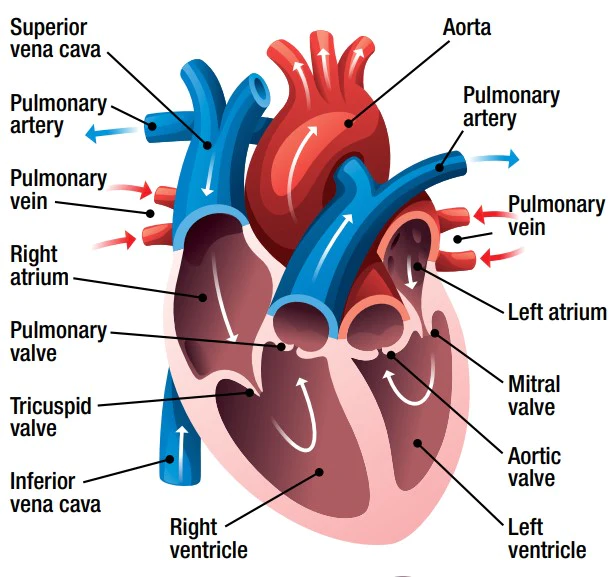
AQA GCSE Biology Trilogy: The Blood Vessels
The Blood Vessels:
Arteries:
Carry blood from the heart to the organs
Carry bright-red oxygenated blood
Can stretch
Have thick walls
Containing muscle and elastic fibres
Have small lumens
The central hole which allows blood to flow
Veins:
Carry blood from the organs to the heart
Carry purple-red, low-oxygen blood
Have thin walls
Have valves
To make sure blood can only flow in one direction
Blood is squeezed by the skeletal muscles
Have large lumens
Capillaries:
Form a huge network of tiny vessels that link the arteries and the veins
Have narrow, thin walls
Suited for the diffusion of oxygen and glucose
Carbon dioxide can easily pass through
Double Circulation:
Pulmonary Circulation System:
Connects the heart and the lungs
Allows for gas exchange to take place
Systemic Circulation System:
Connects the heart and the cells of the body
Allows cells to be provided with oxygen
Takes carbon dioxide from the cells
Key Facts:
Vital in warm-blooded animals
Efficient
Ensures all cells are provided with oxygenated blood
The Heart:

AQA GCSE Biology Trilogy: The Blood Vessels
The Blood Vessels:
Arteries:
Carry blood from the heart to the organs
Carry bright-red oxygenated blood
Can stretch
Have thick walls
Containing muscle and elastic fibres
Have small lumens
The central hole which allows blood to flow
Veins:
Carry blood from the organs to the heart
Carry purple-red, low-oxygen blood
Have thin walls
Have valves
To make sure blood can only flow in one direction
Blood is squeezed by the skeletal muscles
Have large lumens
Capillaries:
Form a huge network of tiny vessels that link the arteries and the veins
Have narrow, thin walls
Suited for the diffusion of oxygen and glucose
Carbon dioxide can easily pass through
Double Circulation:
Pulmonary Circulation System:
Connects the heart and the lungs
Allows for gas exchange to take place
Systemic Circulation System:
Connects the heart and the cells of the body
Allows cells to be provided with oxygen
Takes carbon dioxide from the cells
Key Facts:
Vital in warm-blooded animals
Efficient
Ensures all cells are provided with oxygenated blood
The Heart:

 Knowt
Knowt
